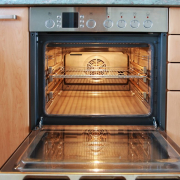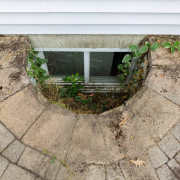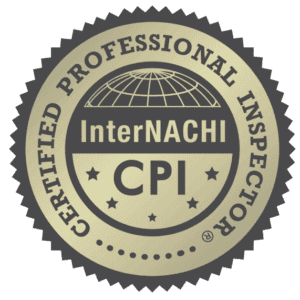How Does Radon Enter A Home
The last thing homeowners ever think about regarding their home is testing. Most homeowners attribute the word “test” to their educational backgrounds. Homeowners rarely think a home needs to be tested. Believe it or not, your home requires a variety of tests throughout the buying, selling, and owning processes. Keeping up to date on the good and bad of your home is a great way to protect your investment. Testing your home for radon, carbon monoxide, structural stability, and wind sustainability are just a few ways we learn more about our home. How does radon enter a home? Radon travels up through the soil and enters the home via cracks in your foundation and concrete walls.
Let’s take a look below at what’s involved with Radon and Radon testing.
What Is Radon
Radon is a radioactive gas that is a product of decaying uranium. Radon is found in nearly all soils on earth. The gas rises above the soil and makes its way into the air. As it approaches the air, it escapes into your home via cracks and crevices in your foundation and other locations of the home. Once it arrives at the home, it becomes trapped and builds up. Radon from soil gas is the biggest problem. Also, radon gas can come from well water.
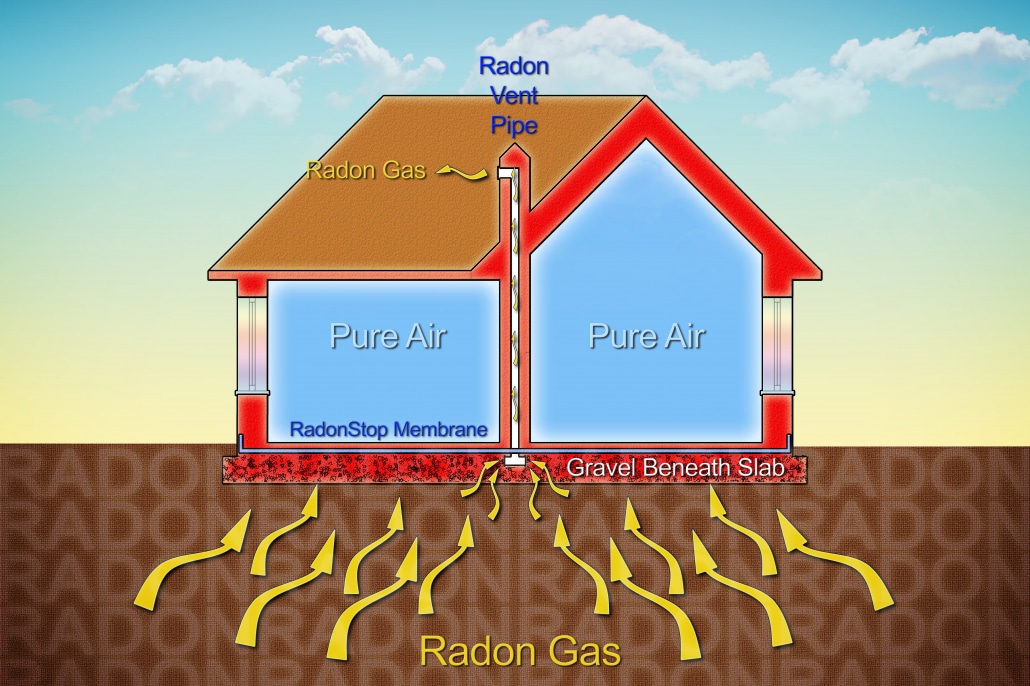
Where Does Radon Come From
Believe it or not, Radon gas is a naturally occurring phenomenon that we have zero control over. All we can do is understand its existence and hope to cope properly to avoid health issues or death. Let’s take a look below at the areas in which Radon comes from.
- The existence of radon comes as it is a bi-product of natural decaying uranium and radium. As uranium decays it becomes radium which releases radon gas into the soil, water, and rock formations. So, it is a natural occurrence of radioactive materials naturally breaking down.
- Much like carbon monoxide, radon is odorless, tasteless, and colorless. It comes to us from rocks and soil. The radon gas dissipates through our soil and out into the atmosphere. According to the Environmental Protection Agency (EPA), one out of fifteen homes contains elevated levels of radon in the U.S. This creates an increase in lung cancer susceptibility of nonsmokers.
- Radon enters all types of homes. It does not matter how new or old the home is. Radon into the home through cracks and crawl spaces can happen daily. If you have met or exceeded 4.0 picocuries per liter (pCi/l) of gas in the air of your home, you should take action. According to the Surgeon General, Centers for Disease Control, and the EPA, these gas levels are very detrimental to your health and should have your home tested and equipped for gas removal.
- Radon is also known to enter a home through unsealed sump pump areas and cracks or openings in plumbing and water supplies. Non-visible and visible cracks in your slab foundation and basement are great areas for radon to enter the home.
- More specifically, radon gas will enter through cracks in the foundation, construction joints, cracks in the basement walls, holes in your sump pump area, plumbing penetrations that aren’t sealed, suspended floors, and drafty homes.
- Since air pressure in a home is lower than its surrounding areas, as the gas leaves the home via exhaust fans, radon gas is sucked into the home and the home traps the radon. Hot air rises, and so, during the colder months, the hot air escapes and new air moves into the home. The gases are drawn in from the surrounding areas to replace the air that has left the home. Pressure variations are what create this vacuum-type action.
- As long as the home is a contact with the ground, radon gas can and will enter the home. The level of the home and building materials used are key factors for radon problems arising. Make sure to test every two years and install a radon mitigation system to alleviate any issues.
How To Inspect For Radon
Believe it or not, you have three options for radon testing. You could have short-term testing, long-term testing, or continuous radon testing conducted at your home. Typically, this is not a do-it-yourself recommended project due to the health and safety implications. Hiring a professional service is highly recommended for all tests regarding radon gas.
Short-Term Radon Testing
Many of these tests are activated charcoal-based or electric ions. They are typically conducted if additional information is needed from the home. In addition, they measure radon gas levels over a 2 to 7 day period. Test measurements are then mailed to a lab for review. You can find these in hardware stores and online retailers. Learn more about short-term radon testing in Chicago here.
Long-Term Radon Tests
Just like a short-term test, you can purchase a long-term radon test at your radon agency or online retailer. Long-term tests conduct a 90-day to a one-year inspection and are typically more reliable due to the capturing of the drop in air pressure, gusty winds, snow levels, and the moisture in the soil. All of these factors trap radon gas. So, measuring their presence is important.
Continuous Radon Tests
Lastly, you have what’s called continuous radon tests that are electric and can plug into a standard outlet. They conduct testing every second that they are plugged in and functioning properly. Air is sampled and measured continuously so that the homeowner is alerted right away, of any potential issues.
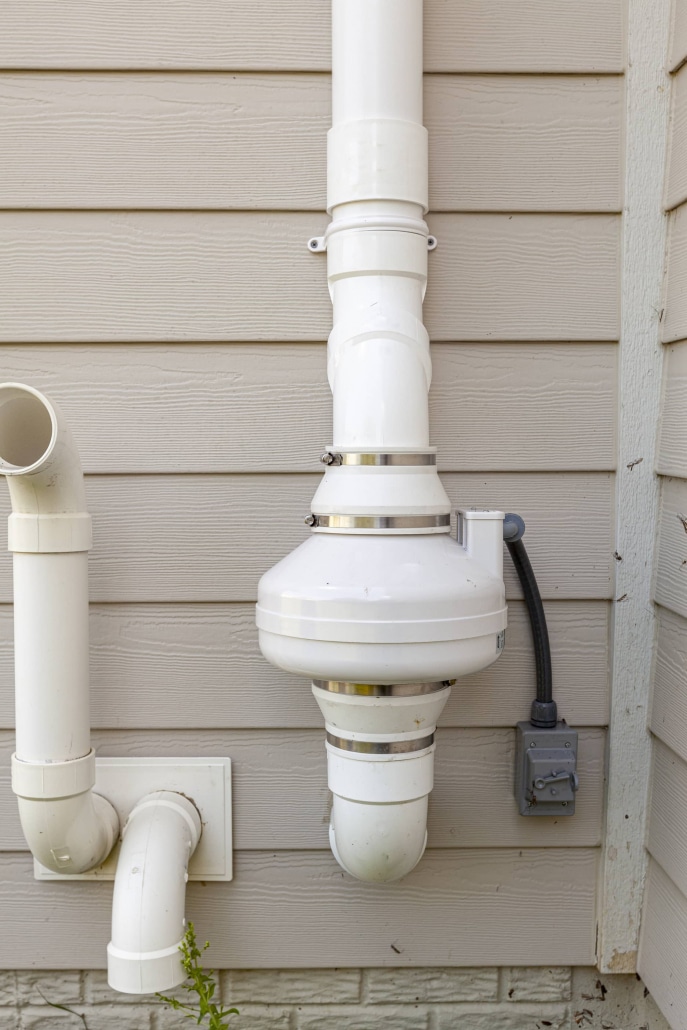
How Much Does It Cost
Fortunately for the homeowner, radon testing is fairly inexpensive. Of course, ensuring your family’s health and safety should never have a price tag. The national average cost for a radon test is $150 to $350. However, if you get a full home inspection, you could get a radon mitigation test for a lower price. The average cost for a full home inspection is $520 to $650.
Every home inspection team is different, so double-check with your local team to see who offers the combination of tests, so you can save time and money. Keep in mind that if you live in an area with high radon exposure, the installation and equipment costs for installing a radon mitigation system are $750 to $5,000 depending on the size of your home.
Other Recommended Maintenance
Now that you are understanding how radon gas can enter a home. Make sure that you read up on who is responsible for conducting a radon mitigation test. If you are selling or buying a home, a radon mitigation test is highly recommended. But knowing who foots the bill, is key here! You don’t want to go out spending more money if the seller is responsible for having the test completed as part of a home inspection.
Once you know who is responsible for hiring a radon mitigation team, go ahead and begin to move forward. Understanding how often a radon mitigation test should be conducted is also very important. Let’s be clear, that just because you have purchased the home, does not mean the recommended maintenance is completely done. It just means you bought yourself time as the inspections on the home should all be up-to-date.
Finally, while you are on the topic of radon testing, it is a great idea to test other areas of your home. One area related to home safety that we often ignore is our fire alarm system. This is a great time to conduct testing on your smoke detectors and possibly change the batteries to your smoke detectors. Many brands of smoke detectors are also capable of conducting carbon monoxide detection. So, keeping your family safe from another odorless gas that can enter the home is a great idea here.
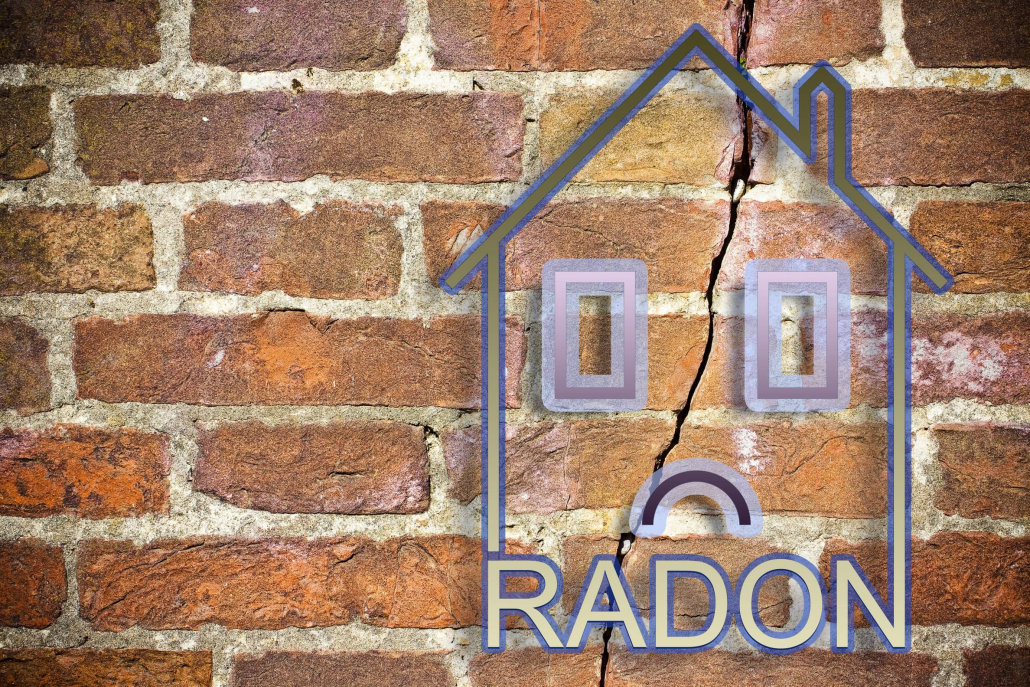
When Do I Call A Professional
Knowing how radon can enter a home is your first step to success. Hiring a radon mitigation team to conduct a test of your home is the next step. As a homeowner, you are not going to be the one to conduct this test. It isn’t a do-it-yourself kind of project. It needs to be conducted safely and accurately. This test is recommended to be completed every two years. Contact your local home inspection team. They will be able to conduct your radon mitigation inspection or refer you to the proper professional. Your health and safety are key here, so make sure that the tests are conducted in a timely manner.
Conclusion
Regardless of where you live, conducting a radon mitigation test every two years is highly recommended. Regardless of if you are selling your home or not, keeping tabs on possible exposure that could impact your health is most important. Anytime you are dealing with an odorless and tasteless gas, you should want to get regular tests conducted. Before you purchase a home or even after a renovation has been completed, hire your local home inspection team to get a full home inspection. This can include a radon mitigation inspection.
Once the inspection comes back, you will get peace of mind that all is well. You might also get a recommendation to install a radon mitigation system if it registers high in your area of living. At the very least, you will know what the radon gas levels are in your local area. Call on Home Inspection Geeks to get a radon mitigation test while we conduct a full home inspection in the Chicago area.





